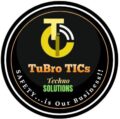Russian Regulation Compliance & Certification
Customs Union Technical Regulations Compliance required to export to the Eurasian Economic Union – EAEU (former Customs Union). whose Russia, Belarus, Kazakhstan, Armenia and Kyrgyzstan.
Customs Union Technical Regulations Compliance required to export to the Eurasian Economic Union – EAEU (former Customs Union). whose Russia, Belarus, Kazakhstan, Armenia and Kyrgyzstan.
To comply with the Russian safety requirements, a product must meet the requirements set forth in the Technical Regulations of the Customs Union (TR CU) on the safety of technical devices.
No in current situation, GOST certification systems for individual member states are being replaced by certification to the Customs Union Technical Regulations (CU TR).
Technical Regulations of the Customs Union (TR CU) are similar to Directives, covering the requirements of the product’s life cycle. Each TR is supported by GOSTs and other standards in terms of product-specific requirements and testing methods.
depend on the type of product, we have different conformity assessment process certification or declaration to national GOST systems, Customs Union TR certification or declaration, State Registration.
Products cover by Technical Regulations are industrial and low-voltage electrical equipment, textiles, footwear, equipment intended for hazardous areas and all children’s products including toys, cosmetics, food, and furniture.

The following is a general overview of the steps involved in achieving compliance with the Russian safety requirements:
- Determine the relevant TR CU for your product – The TR CU sets forth the safety requirements for a wide range of technical devices, so it is important to determine which TR CU applies to your product.
- Conduct safety testing – To demonstrate compliance with the safety requirements, a product must undergo safety testing. This can be done by a testing laboratory accredited by the Russian Federal Accreditation Service (Ros accreditation).
- Obtain a Declaration of Conformity – Once the product has passed the safety testing, the manufacturer or authorized representative must issue a Declaration of Conformity (DoC) to confirm that the product meets the safety requirements.
- Apply the EAC marking – The manufacturer must affix the EAC marking to the product to indicate that it complies with the Russian safety requirements. The EAC marking consists of a set of Cyrillic letters and numbers that indicate the TR CU number and conformity assessment procedure used.
- Register the product in the State Register of Technical Regulations –The manufacturer or authorized representative must register the product in the State Register of Technical Regulations to confirm that it has undergone the required conformity assessment procedures and meets the Russian safety requirements.
- Maintain documentation – The manufacturer must maintain the technical documentation and test reports for at least 10 years to demonstrate compliance with the Russian safety requirements.
It is important to note that these steps may vary based on the specific requirements of the TR CU that applies to your product. An experienced consultant can help guide you through the process and ensure that your product is in compliance with the Russian safety requirements.




